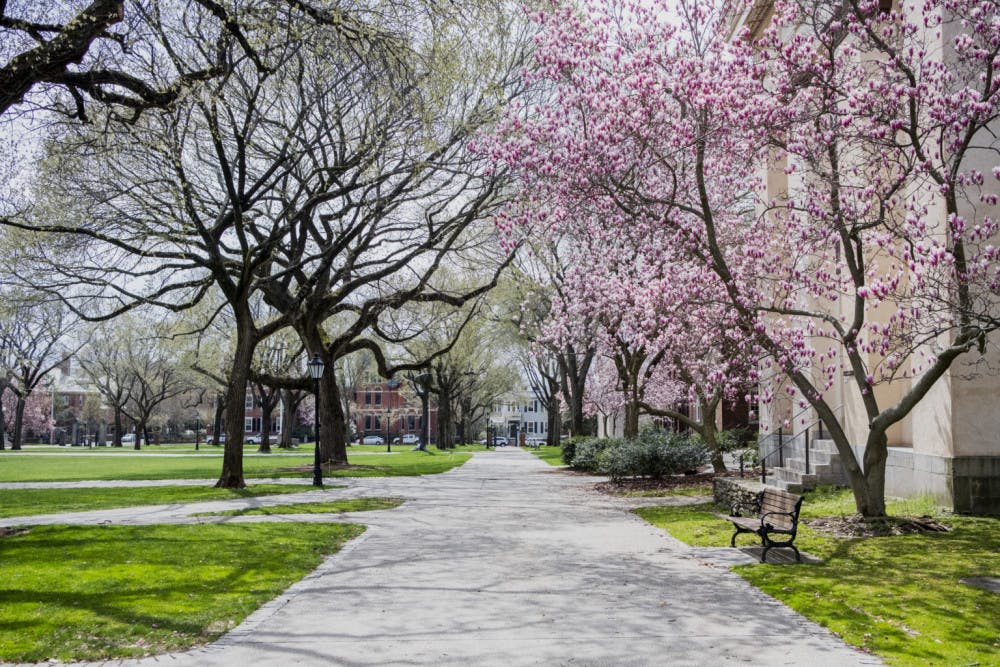The Native American and Indigenous Studies Initiative is currently in the process of developing a new concentration, which it hopes to launch in Fall 2021 or Fall 2022, according to D. Rae Gould, associate director of the NAISI.
The new concentration, tentatively named Critical Native American and Indigenous Studies, will take an interdisciplinary approach and gather faculty from diverse backgrounds to help students better understand the history, cultural traditions and political experiences of Indigenous Peoples.
In designing the new Critical Native American and Indigenous Studies concentration, NAISI formed a working group of faculty and students that brought diverse perspectives and pushed for an interdisciplinary approach in both teaching the courses and thinking about what to include in the curriculum.
The working group is also deliberating alternatives to indigenize the name of the concentration to reflect the pedagogy and approach taken in the curriculum. In creating the concentration name, Gould said that the working group is asking, "is there an indigenous word for studies, for knowledge … is there a way to indigenize our own concentration as it's structured and think about it in a more indigenous way?”
The concentration is currently designed to comprise 10 courses as its requirements and students focus on one among four "breadth areas," according to Gould. "That's the part (of the curriculum) that's very much in flux," she added, as the draft curriculum awaits feedback from the administration.
The core faculty who have been involved in the NAISI since the beginning come from different academic areas and offer unique input to the curriculum's development. "We have folks in history, who are looking at New England specifically as well as broader indigenous studies in central and south America; we have folks who are doing indigenous languages from central and south America," said Adrienne Keene, faculty co-chair at NAISI and assistant professor of American Studies. Faculty focuses include Environmental Studies, education and representation in Ethnic Studies, Public Health and Theater and Performance studies.
Students also contributed to the curriculum’s design. Three undergraduate students were involved in the making of the concentration, "a large proportion” of the approximately eight-person planning committee, according to Gould.
Faith Blalock '22, a member in the working group, helped push for a more integrated STEM presence in the new concentration. "In indigenous education, usually the science you learn is alongside the cultural practices,” she said. Examining “the means to survival” includes “understanding how plants work, how tides work, and when to do certain things when the environment changes." This integration between STEM and humanities — often lacking at Brown, Blalock said — is "a total different approach to teaching."
NAISI’s founding in 2016 and the current push for a new concentration stems from "grassroot efforts made by students and faculty," according to Gould. In the fall of 2015, in response to a since-removed op-ed published in The Herald suggesting that Native students should celebrate the benefits of Columbus' arrival in the Americas, students and faculty met with the University’s President and Provost and urged a more robust institutional commitment to research and teaching on Native American and Indigenous peoples.
A planning committee, including 25 faculty members, undergraduates, graduate students and postdoctoral fellows from many departments, produced a proposal in May 2016, which was reviewed by the University’s Academic Priorities Committee and approved by the Provost as the basis for launching the initiative, according to Gould.
"There (have) been deeper conversations around ‘what does it mean to be living in a settler colonial society on indigenous land?’ and ‘how do we as a society live in good relation with the people from the land and the land itself?," Keene said, "so the momentum of the time we are in has really driven the conversation to move more quickly." Student efforts have also led to the establishment of groups such as Decolonization at Brown and the movement towards recognizing Indigenous People's Day.
Currently, NAISI hopes to expand its tribal outreach and engage the native community in southern New England and Rhode Island, expand on-campus student engagement, hire more faculty to offer courses currently not offered at the University and make the University a leader in the field of indigenous studies.
"Part of the goal to have native and indigenous studies on campus is to have Brown start to really address the relation with the land that they occupy and think about what that means in relation to local and indigenous communities, as well as the indigenous students and faculty on campus," Keene said.

ADVERTISEMENT




